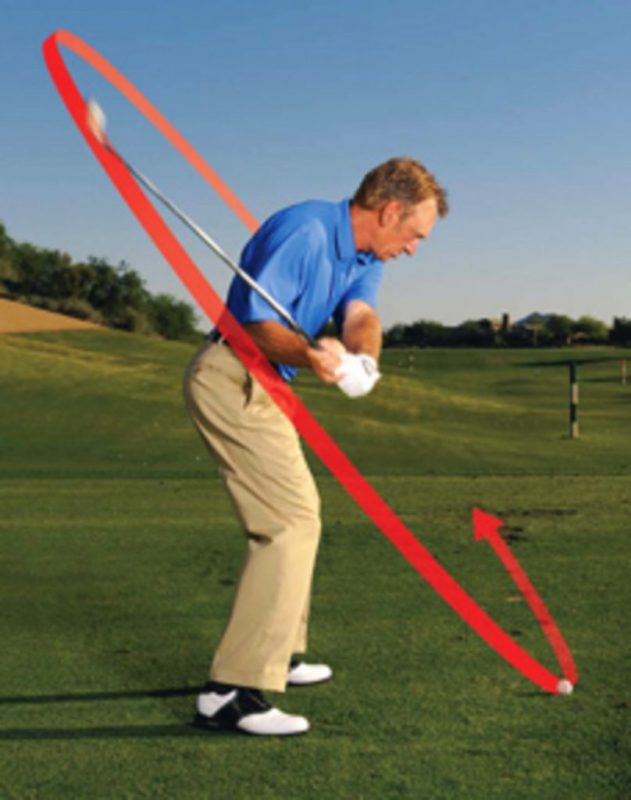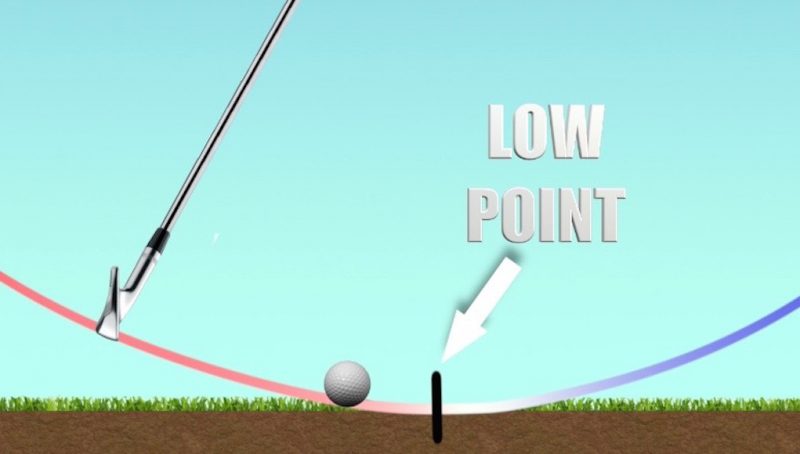Josh’s Tips & Tricks: Make Big Circles
Intro
Hello fellow golfers. Welcome to this weeks tips & tricks. This week I’m going to explain a bit more about the overall dynamics of the golf swing and some checkpoints you can practice. I often get asked about where the hands and club should be at certain times during the swing and how that can impact the ball flight.
Swing on Plane

When viewing golf swings from behind (down the line) I’m always looking to see which direction the hands and clubhead move. I have created a little device which can hopefully explain the way the club should move in the swing.
I have pieced together three hula-hoops to make a triangle. The angle that the club rests at set-up is roughly the same as the hula-hoop. This represents the plane line. There are certain positions in the back swing that need to follow that line.
In the first part of the swing watch how the hands and clubhead gently push away from the target. The hands or clubhead haven’t severely moved around or away from the body. As the club then starts to lift the hands and clubhead work through the lines of the body, following the big circle. The aim is to then get the shaft angle over the right shoulder, parallel to the floor and parallel to the target.
Through the downswing the aim is to get close to the same line with the body rotating to face the target. The club will not necessarily follow the exact same line, the hands will ideally be slightly lower, but the club will be moving parallel to the lines created in the backswing. Overall the aim is to keep the hands and club working on a relatively constant circle, this will produce more consistent and reliable shots. It is also important to not that the lie angle and therefore the plane of each club is slightly different. This doesn’t mean you have to swing it different, this should naturally change with practice.
Low Point in the Swing

From the face on view in the video you can see how the hula-hoop represents the low point of the swing arc. It is important to understand where the club makes contact with the ground for good ball striking. With an iron we want the low point to be after the ball. This means the club needs to be moving on a downward angle into the back of the ball. This is much easier when you create a wide arc in the swing. If the arc becomes too narrow the low point is likely to change. Lots of people create extra levers in their lead arm (bend it). From there the clubhead reextends creating an early release or “casting” motion. This will lead to a ground first contact and fat or thin strikes.
The angle of attack changes with each club also. Because of the swing plane a wedge will have a steeper angle of attack compared to a driver. Try to always hit through the back of the ball and transfer weight. If you do this and have good ball position the low point will take care of itself.
Summary
Next time you practice have a look in the mirrors to see if you create a wide arc in your swing. If you make big circles that do not deviate off the plane line you can almost guarantee shots that start closer to the target line. Shifting the low point past the ball at impact will almost guarantee a ball first strike with compression. You should feel the ball coming off the face with more power and a more penetrating ball flight.
If you would like to get more information on swing dynamics please get in touch. Now is the time to look at winter coaching packages and break down your swing ready for next season. If you are not sure if you want a whole block of lessons just book one to see how you get on. If that one goes well you can include it as one of your packages when you later sign up.
Cheers,
Josh

